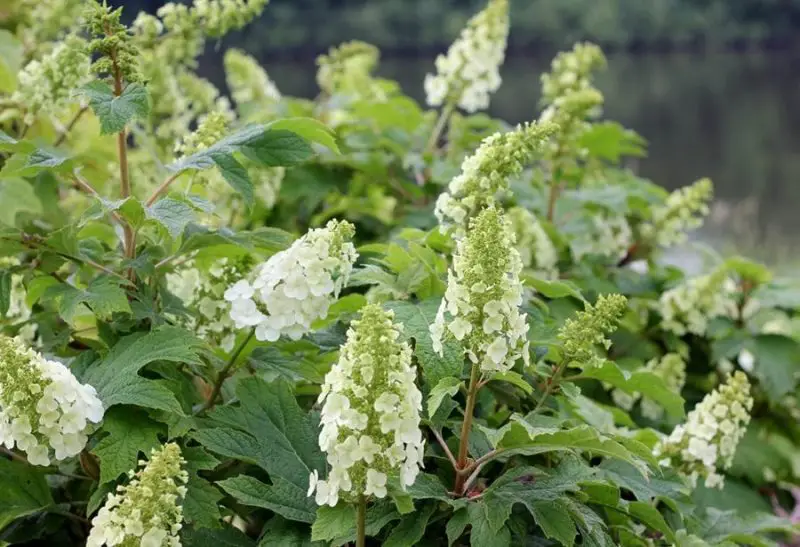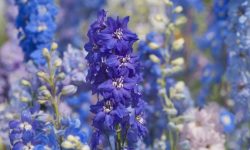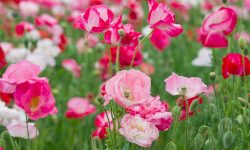Hydrangeas are beloved for their large, vibrant blooms that can brighten any garden with shades of blue, pink, white, or purple. However, many gardeners face a common issue: their hydrangeas produce plenty of green foliage but no flowers. If you are asking yourself, “Why are my hydrangeas not blooming?” you are not alone. This issue often results from environmental stress, improper pruning, or nutrient imbalances. The good news is that with the right care and adjustments, you can encourage your hydrangeas to bloom beautifully again.
In this detailed guide, we will explore the main reasons why hydrangeas fail to bloom and provide effective solutions to help you restore their flowering potential quickly.
Understanding the Blooming Cycle of Hydrangeas

Before troubleshooting blooming issues, it is essential to understand how hydrangeas produce flowers. Hydrangeas generally fall into two main categories: those that bloom on old wood and those that bloom on new wood. Varieties like bigleaf hydrangeas (Hydrangea macrophylla) and oakleaf hydrangeas (Hydrangea quercifolia) typically set flower buds on old wood, meaning they develop flower buds during the previous growing season. If these buds are accidentally removed during pruning or damaged by frost, no blooms will appear the following year.
On the other hand, panicle hydrangeas (Hydrangea paniculata) and smooth hydrangeas (Hydrangea arborescens) bloom on new wood, producing flower buds during the current season. These varieties are less prone to blooming issues caused by pruning mistakes but can still suffer from environmental stress and poor care practices.
Knowing which type of hydrangea you have will help you determine the root cause of the blooming problem and the right approach to fix it.
Improper Pruning and Its Impact on Blooms
One of the most common reasons hydrangeas fail to bloom is improper pruning. If you cut back hydrangeas that bloom on old wood during late fall, winter, or early spring, you may unintentionally remove the flower buds formed the previous year. This is especially common with bigleaf and oakleaf hydrangeas, where buds form in late summer or early autumn.
For hydrangeas that bloom on old wood, pruning should be done immediately after flowering, allowing enough time for new buds to form before winter. On the other hand, new-wood bloomers like smooth and panicle hydrangeas can be pruned in late winter or early spring without affecting flowering, as they develop buds later in the season.
If you suspect improper pruning is the culprit, allow your hydrangea to grow naturally for a year or two without heavy cutting. This will give it time to restore its blooming cycle.
Cold Damage and Winter Protection
Cold temperatures can severely affect hydrangea flower buds, especially for old-wood bloomers. Buds that form in late summer may be killed by harsh winter frost, leaving only leafy stems when spring arrives. This issue is particularly common in regions with unpredictable temperature drops or late spring frosts.
To protect hydrangeas from winter damage, cover them with a layer of mulch, leaves, or straw around the base to insulate the roots. For bigleaf hydrangeas, consider wrapping the shrubs with burlap or using frost cloth during extreme cold spells. In areas with very harsh winters, you can also plant hydrangeas in a sheltered spot near a wall or under the protection of taller plants.
If winter damage has already occurred, the plant will still produce healthy foliage, but you may need to wait until the following year for blooms to return.
Too Much Nitrogen and Unbalanced Fertilization
Fertilizer plays a significant role in hydrangea blooming, but too much nitrogen can lead to lush green leaves at the expense of flowers. Many gardeners unintentionally over-fertilize with high-nitrogen products, which stimulate leaf growth rather than bud formation.
To encourage flowering, switch to a fertilizer with a higher phosphorus content, as phosphorus promotes blooming. A balanced fertilizer with a ratio such as 10-30-10 or 15-30-15 works well for hydrangeas. Apply fertilizer in early spring and again in mid-summer for best results, but avoid overfeeding, as this can stress the plant.
Always water the plant well after fertilizing to prevent root burn and ensure nutrients are absorbed properly.
Insufficient Sunlight and Its Effects on Flowering
Hydrangeas need the right balance of sunlight to produce flowers. While most varieties thrive in partial shade, too much shade can limit flowering. If your hydrangeas are planted in a location with dense tree cover or receive less than four hours of morning sunlight, they may produce few or no blooms.
To encourage flowering, choose a planting spot that receives morning sunlight and dappled shade in the afternoon. If moving the plant is not possible, consider trimming surrounding vegetation to increase light exposure. Panicle and smooth hydrangeas tolerate more sun, while bigleaf hydrangeas prefer some afternoon shade to prevent leaf scorch.
If poor light exposure is the issue, you may need to be patient, as hydrangeas can take a season or two to adjust after being relocated.
Watering Stress and Soil Conditions
Both underwatering and overwatering can cause stress that affects blooming. Hydrangeas prefer consistently moist, well-drained soil. If the soil is too dry, the plant will focus on survival rather than flower production. Conversely, waterlogged soil can suffocate roots, leading to weak growth and limited flowering.
Check your soil regularly and water deeply once or twice a week, depending on weather conditions. Mulching around the base of the plant helps retain moisture and regulate soil temperature. Hydrangeas also prefer slightly acidic to neutral soil, with a pH between 5.5 and 6.5. Test your soil pH, and if needed, amend it with organic matter or soil conditioners to create optimal conditions for flowering.
Plant Age and Patience in Flower Development
Sometimes, the lack of blooms is simply due to plant age. Newly planted hydrangeas often take a few years to establish strong root systems before they begin producing abundant flowers. If your hydrangea is young or was recently transplanted, give it time to adapt to its new environment.
Provide proper care, including consistent watering, light fertilization, and protection from extreme weather. As the plant matures and becomes well-established, it will naturally produce more blooms.
Pest and Disease Problems That Hinder Blooming
Although less common, pest infestations and diseases can also affect hydrangea blooms. Aphids, spider mites, and scale insects can weaken plants by sucking sap, reducing energy available for flower production. Fungal infections, such as powdery mildew or leaf spot, can further stress the plant.
Inspect your hydrangeas regularly for pests or signs of disease. If pests are present, use insecticidal soap or neem oil as a natural treatment. For fungal issues, remove affected leaves and improve air circulation around the plant. Healthy hydrangeas are more likely to bloom consistently, so keeping pests and diseases under control is crucial.
How to Encourage Quick Bloom Recovery
Once you identify the reason your hydrangeas are not blooming, you can take steps to fix it quickly. Adjust your pruning schedule according to the type of hydrangea you have, provide adequate winter protection, and use a balanced fertilizer to promote flowering rather than leaf growth. Ensure the plant receives enough sunlight, and maintain consistent watering with well-drained soil.
If your hydrangeas have suffered from pruning mistakes or winter damage, patience is key. Focus on keeping the plant healthy, and within a season or two, it will return to its natural blooming cycle.
Frequently Asked Questions
Why do hydrangeas produce leaves but no flowers?
This usually happens due to excessive nitrogen fertilization, improper pruning, or lack of sunlight. Correcting these factors will help encourage flowering in the next season.
Can I make hydrangeas bloom again this year?
If buds were removed or damaged, it may not bloom again this year. However, providing proper care, fertilizing with phosphorus-rich plant food, and ensuring adequate sunlight can sometimes stimulate late-season flowering in certain varieties.
Should I cut back hydrangeas that are not blooming?
No, avoid heavy pruning, especially on old-wood bloomers. Allow the plant to grow naturally for a year to reset its blooming cycle.
Does soil pH affect hydrangea blooms?
Soil pH mainly affects flower color rather than blooming itself, but extremely alkaline or poor soil conditions can reduce flowering. Maintaining slightly acidic soil promotes healthy growth and better blooms.
Conclusion
If you are frustrated wondering, “Why are my hydrangeas not blooming?” the solution lies in understanding your plant’s needs. Proper pruning, balanced fertilization, adequate sunlight, and protection from cold damage are key to encouraging flowering. By making small but important adjustments, you can restore your hydrangeas’ natural beauty and enjoy vibrant blooms season after season.
Meta Description: Why are my hydrangeas not blooming? Learn common causes and quick solutions to help your hydrangeas produce stunning blooms again.






